How We Used Mathematical Thinking to Create Storytelling Math Books
By Ana Crespo
Writing books for Charlesbridge’s Storytelling Math series has been one of the highlights of my career. Not only are they a challenge to write, they are also trailblazers in combining diversity, math, and the power of storytelling. The rationale for the series is very well explained by TERC senior scientist Marlene Kliman in the article Storytelling Math: Picture books as a vehicle for expanding views of math and who can do it. So today I will focus on how the books I authored—Lia & Luís: Who Has More? (Charlesbridge, 2020) and the upcoming Lia & Luís: Puzzled! (Charlesbridge, 2023), both illustrated by Giovana Medeiros—came to be.
Lia & Luís: Who Has More? was inspired by a question my parents used to ask me: What weighs more, a kilo of cotton or a kilo of lead? (I was born and raised in Brazil, where “lead” is commonly used to describe something that is very heavy.) Of course, the answer is that they both weigh a kilo, but what is intriguing is that even though they weigh the same, one kilo of cotton occupies a lot more space than one kilo of lead. And that’s how the story was born! I substituted biscoito de polvilho for cotton and coxinha de galinha for lead and created twin characters who compete to find out who has more snacks.
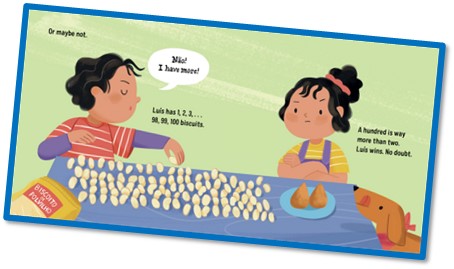
This universal story uses Brazilian culture, Brazilian Portuguese words, and Brazilian American characters to invite kids to participate in the discussion process and come up with their own answer to who has more. So much so that during a school visit, kids came up with different ways the book could have ended. All of them were mathematically sound.
Simple as the plot might seem, creating Lia & Luís: Who Has More? took a lot of planning, mathematical thinking, and eating, too. We wanted the story to be culturally authentic and mathematically possible. (“We” is a team composed of several people, including Charlesbridge editor Alyssa Mito Pusey, designer Jon Simeon, and design assistant Ellie Erhart; TERC senior scientist Marlene Kliman; illustrator Giovana Medeiros; and me.)
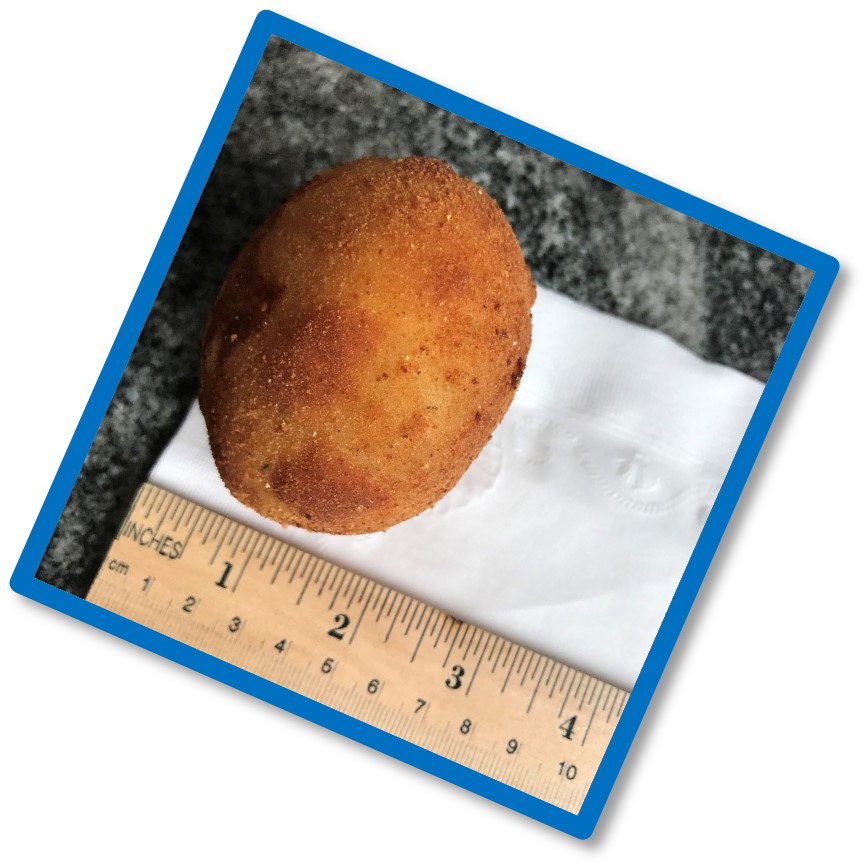

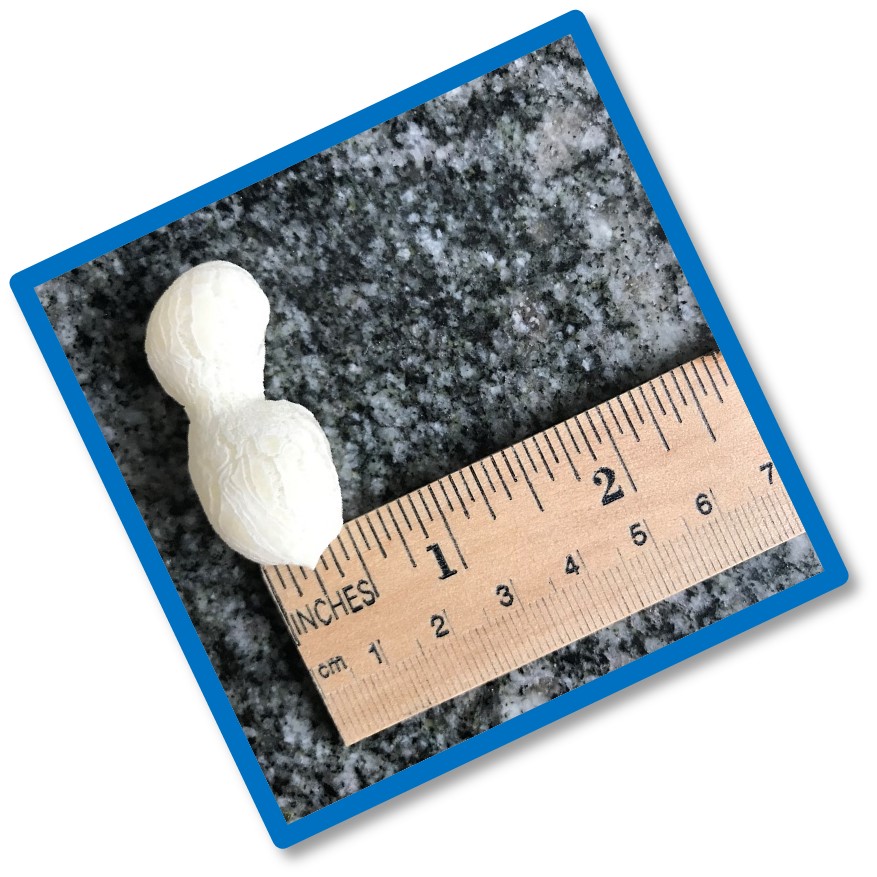
During the development of the book, I measured and weighed the snacks. So we knew that for the math to work perfectly, Lia’s two coxinhas de galinha should weigh 150 grams (75 grams each), and the bag of biscoitos de polvilho should weigh 100 grams. That meant that at the end of the book (spoiler alert!), Lia should give Luís exactly a third of one coxinha, guaranteeing each of them would have 125 grams of snacks—the exact same amount.
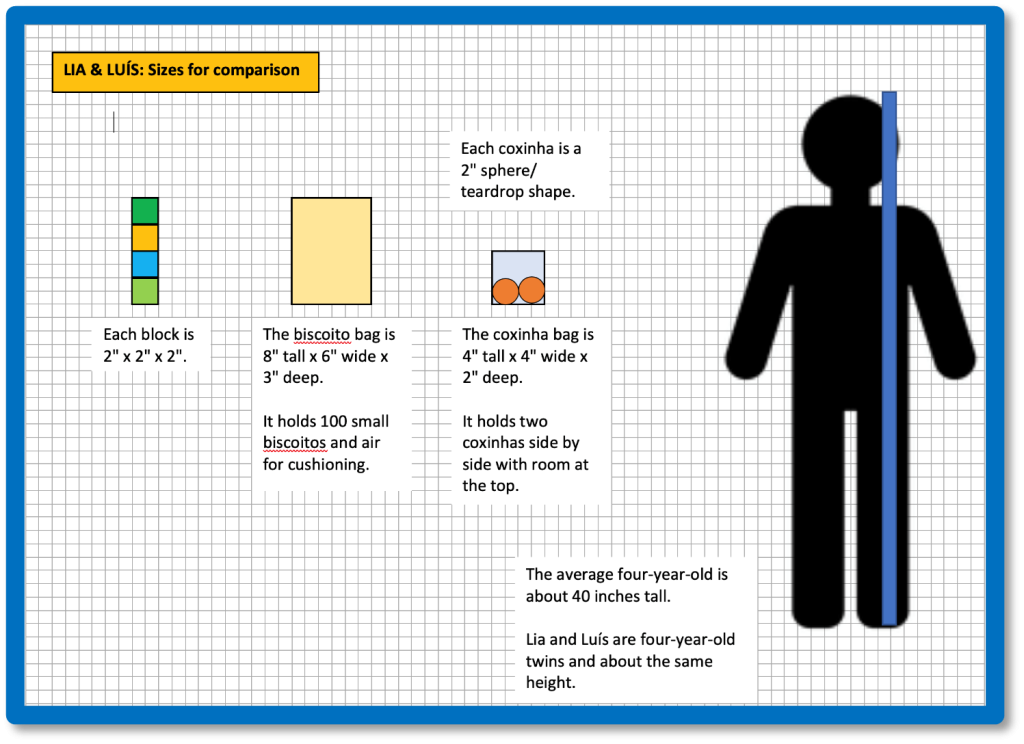
Fun fact: Marlene and Alyssa combined all the necessary measurements in this neat graph. The goal was to make sure the proportions were represented correctly. And Giovana Medeiros did an incredible job with all this information—her illustrations perfectly depict the culture, story, and math.
Now, if you think this sounds complicated, just wait to hear about the upcoming book, Lia & Luís: Puzzled! (This book is going out to the printer right now, and you are the first one to read about it.)

While in the first book the twins engage in a competition to figure out who has more, in Lia & Luís: Puzzled!, they work together to solve a jigsaw puzzle and reveal a secret message. Although Puzzled! does not focus on different ways to measure things, there was still a lot of measuring involved in the development of the book: dimensions of puzzle pieces, of kids’ hands (for relative piece vs. hand accuracy), and of the completed puzzle. Mathematical, geometrical, and logical thinking galore!
First Giovana created the puzzle featuring some of the specific details mentioned in the story. Then Alyssa created a puzzle key so we could address each piece by its “name.” (Oops, now you know what the finished puzzle looks like! And if you know Portuguese, you know the secret message too. Shh!)
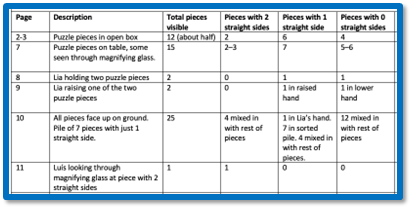
Alyssa and Marlene also created a puzzle chart, so we knew approximately how many pieces should show up on each page, and which pieces should be more visible.
Then the entire team pitched in, making sure each puzzle piece, from A-1 to E-5, was placed in a way that made sense, that no pieces showed up twice anywhere, that connected pieces continued to show up connected throughout the rest of the book, etc. The back and forth lasted months, making this the hardest book project I have ever worked on.
Believe me, this book was certainly a puzzle of its own!
Would you like to take a peek? Check it out below . . . You’re the first ones to see it!
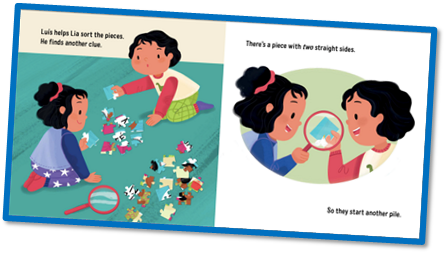
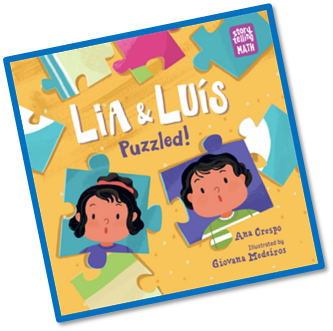
Text and images are courtesy of Ana Crespo and may not be used without express written consent.

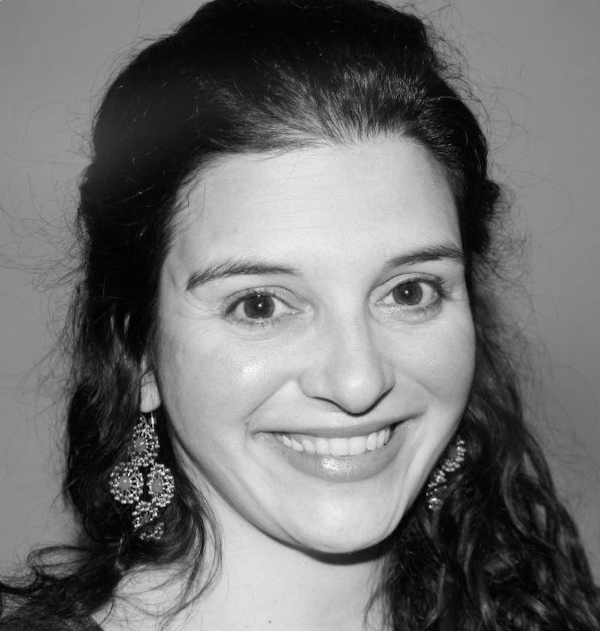
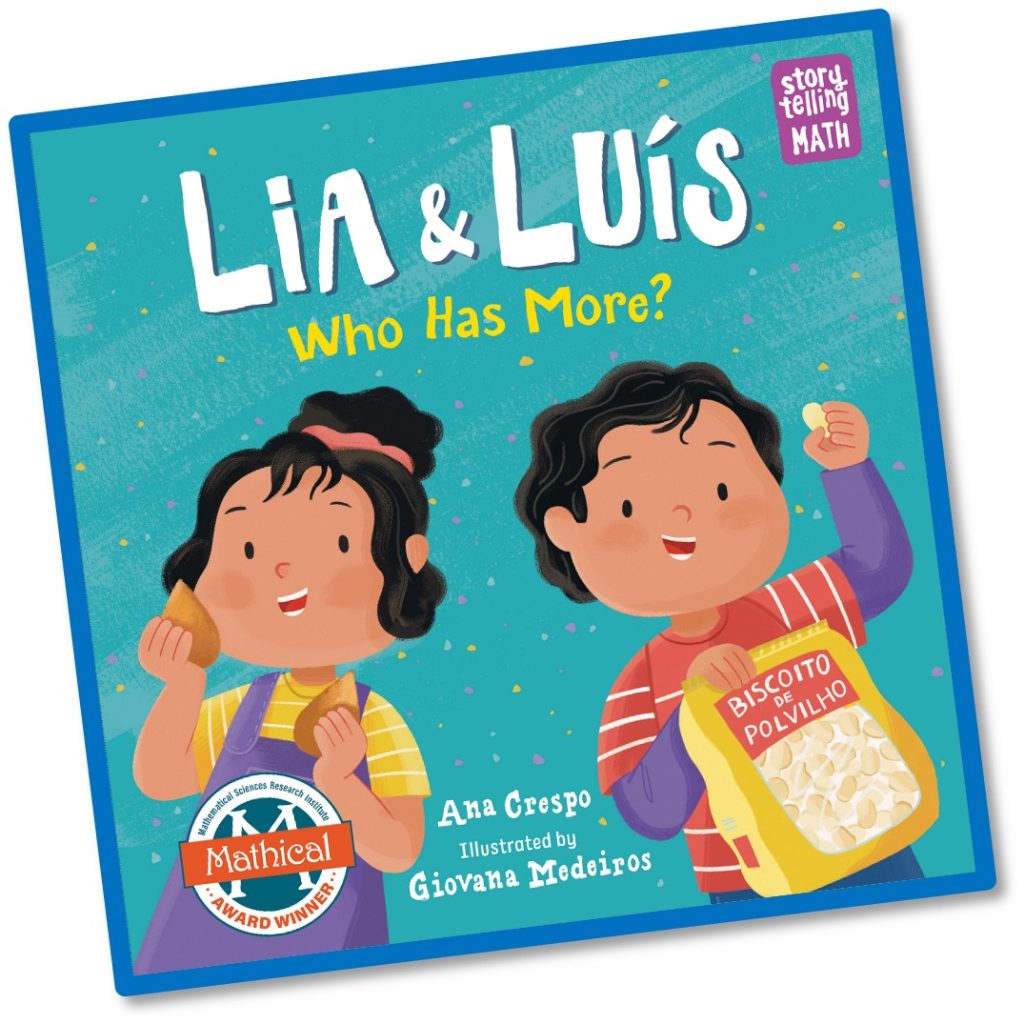
Leave a Reply